Coffee in Italy is all the rage. If you didn’t know any better, you’d think Italians invented it.
While they did not invent coffee, Italians seriously contributed to its evolution.
Read along for a breakdown of all things coffee in Italy. You’ll learn about its history, the types of coffee in Italy you’ll find in every bar, and an interesting dash of history for coffee lovers.
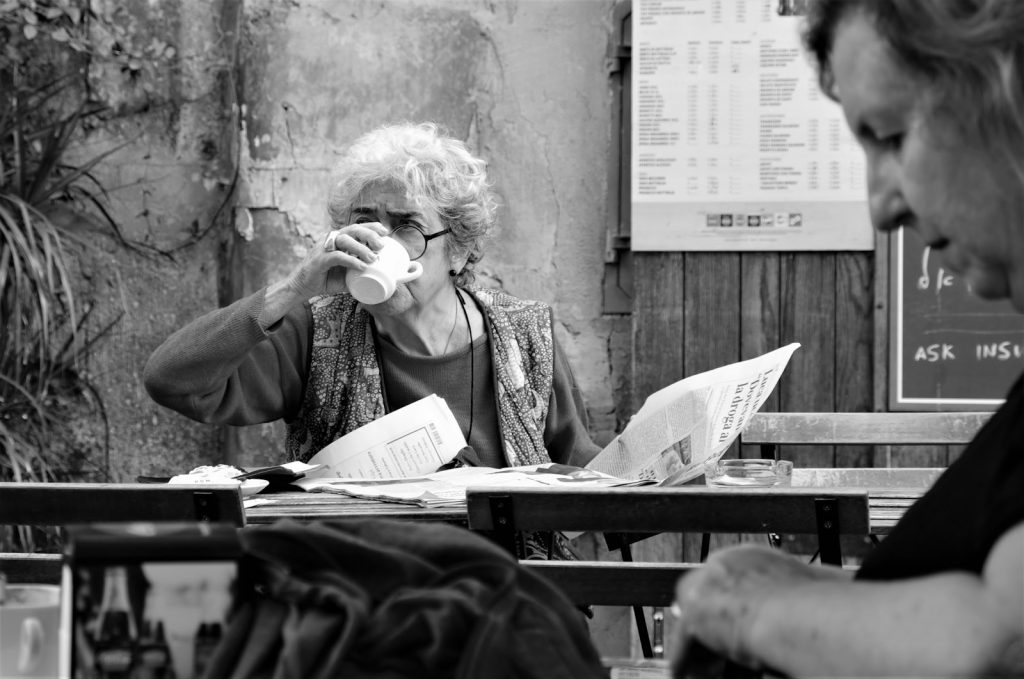
Coffee in Italy— a great way to start your day.
History of coffee in Italy
Coffee in Italy did not become popular until it showed up on the shores of Venice in the 16th century. Merchants first discovered it in Ethiopia, then developed it as a perk-you-up beverage in Yemen. The port of Venice became the first place in Italy—and all of Europe—to see this caffeinated bean arrive. Soon, coffee spots started popping up all over the city.
By the mid-18th century, Venice boasted over 200 coffee houses. The Church initially condemned coffee. However, coffee earned redemption after Pope Clement VIII gave it a try.
At the 1884 General Expo in Turin, Angelo Moriondo won bronze for a steam-powered coffee-making contraption. Seventeen years later in Milan, Luigi Bezzera enhanced Moriondo’s invention. He created espresso by forcing high-pressure water through pressed ground coffee.
This innovation birthed various coffee drinks. For example, Italians created cappuccino, macchiato, Americano, ristretto, and caffe corretto, distinguished by their milk and/or water content. The history of coffee in Italy is rich with innovation. As a result, the country’s traditional Italian coffee drinks have become famous worldwide.

Lots of great drinks to choose from.
Basic rules for coffee in Italy
- In most Italian coffee bars, particularly in urban areas, you typically pay at a cashier near the entrance before ordering. After paying, you provide your receipt to the barista and verbally reiterate your order, such as “Un espresso, per favore.”
- Some coffee bars offer seating, but, as you’ll notice, most Italians stand at the bar and sip their espressos. So, expect to stand, al banco, at the bar counter.
- If you’re at a caffé with outdoor seating, especially if the caffé is located on a piazza, you’ll pay more for the coffee for the privilege of the fresh air and lovely views.
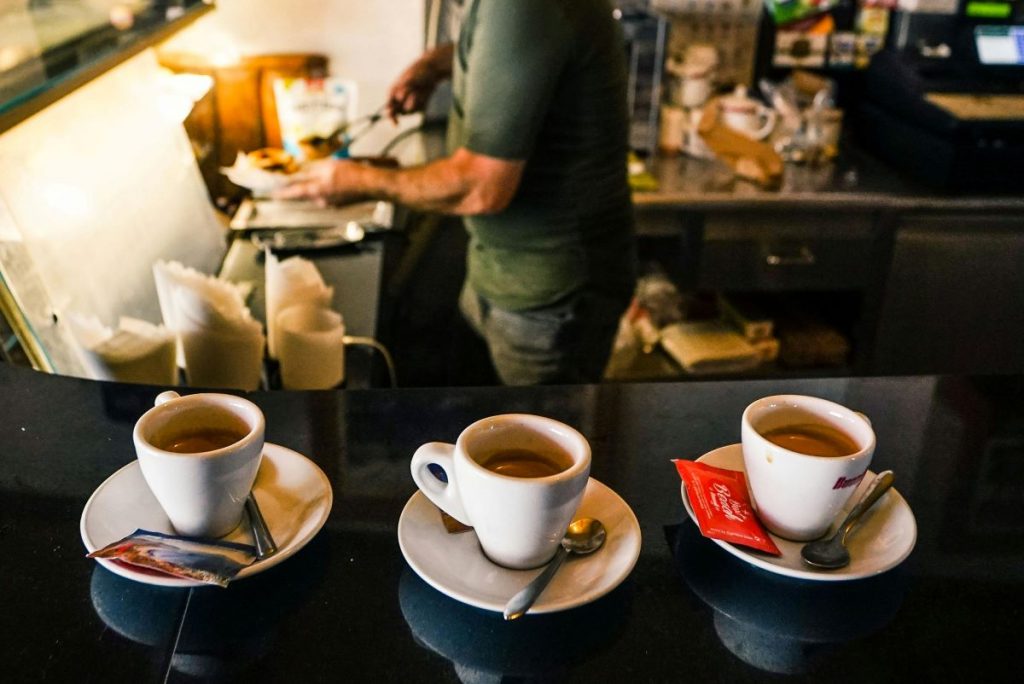
It’s typical in Italy to stand at the bar while having your coffee. Photo credit: Wendy Wei
Types of coffee in Italy
When it comes to traditional Italian coffee drinks, each type has its own place in Italian culture and daily life. Here’s a quick guide to the most popular coffee in Italy and the Italian coffee names you’ll want to know before stepping up to the bar.
Espresso
Espresso rules as the king of all Italian coffee drinks. Italians drink it more than any other coffee. The machine’s fast process turns coffee grounds and water into a small, explosive burst of coffee.
Tips for drinking espresso:
- Espresso can sometimes taste bitter. Many Italians stir in a bit of sugar.
- Even if you don’t add sugar, always take the little spoon and gently stir from top to bottom. This brings out the taste and the aroma of the espresso and enhances the overall coffee experience.
- Drink espresso within the first two minutes. Coffee pros claim that about half of the flavor of espresso disappears after two minutes. So, espresso is not for savoring. At least not longer than two minutes.
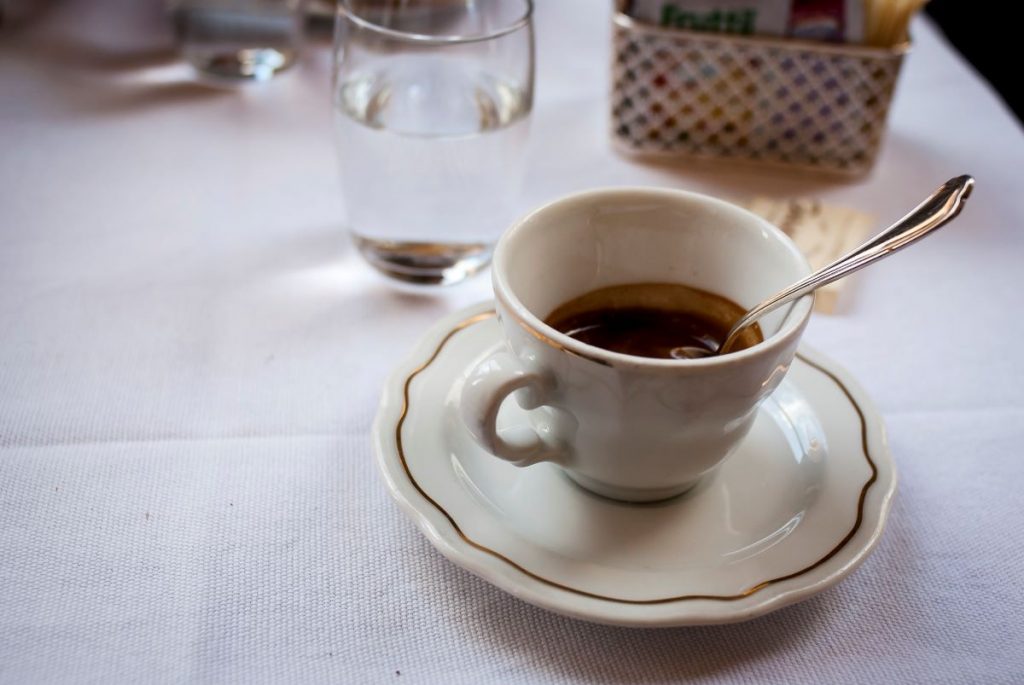
One of the most classic forms of coffee in Italy? The beloved espresso. Photo credit: Salomé Chaussure
Cappuccino
The second most famous coffee drink is the cappuccino. In Italy, it contains a typical 50-milliliter shot of espresso and an equal amount of milk, most of which is foamed milk. Outside Italy, especially at chain coffee shops, you’ll get two-to-three times more foamed milk than espresso.
Cappuccino is the diminutive form of the Italian word, cappuccio, or hood. When the steamed milk and black coffee mix, the drink turns brown, just like the hooded robes that capuchin monks wear. That’s where the name comes from.
Tips for drinking cappuccinos:
- Italians follow one strict rule: no cappuccinos after 11 a.m. Most people can’t explain this rule. Maybe sipping milk after lunch is a culinary crime?
- Some scientists and coffee pros believe many Italians are lactose intolerant. So, they created this cultural rule. If you do order a cappuccino after lunch, expect a few raised eyebrows.
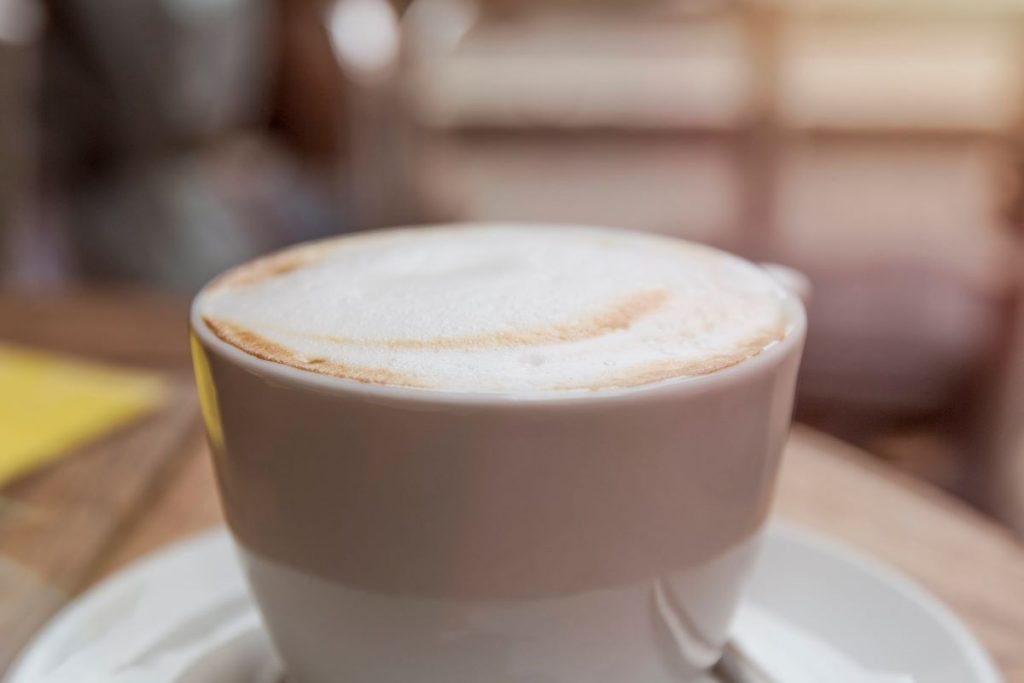
A cappuccino has a creamier texture and a milder coffee flavor compared to a macchiato due having more milk. Photo credit: David Schiersner
Macchiato
The macchiato is a small coffee drink. The name means “stained” or “spotted” in Italian. It consists of an espresso shot with just a “spot” of foamed milk. This drink is perfect if you don’t like straight espresso, but a cappuccino seems too milky.
Tips for drinking macchiatos:
- In Italy, order macchiato and you’ll get exactly what you expect.
- In northern Europe, they might ask if you want an espresso macchiato or a latte macchiato. The latte macchiato contains mostly milk with just a “stain” of coffee.
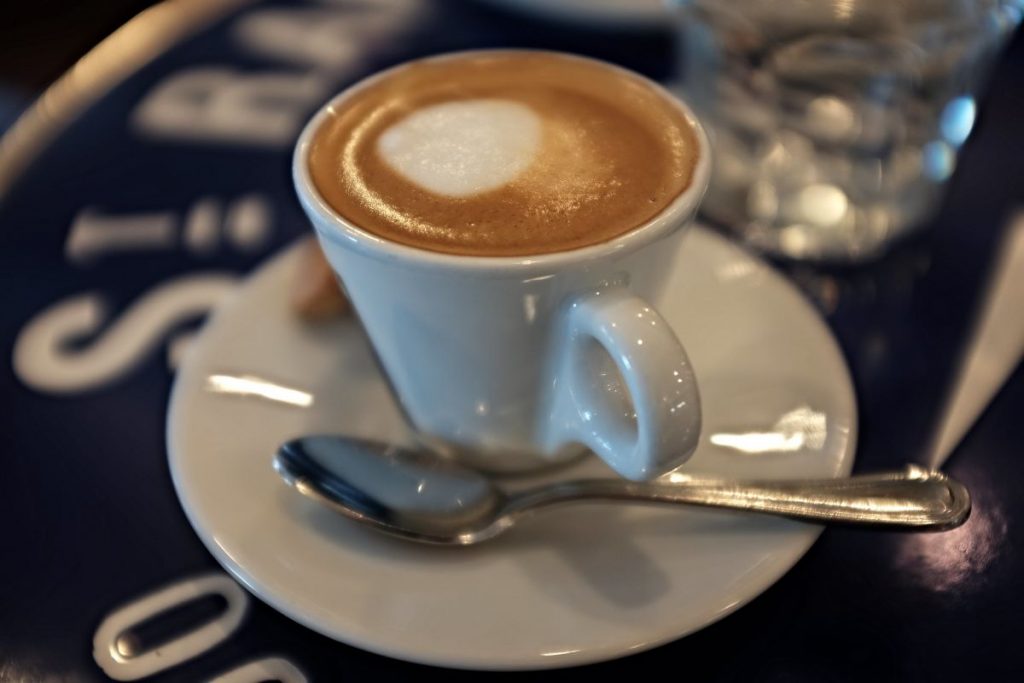
A macchiato is a stronger espresso with just a hint of milk, while a cappuccino is a creamy coffee drink with equal parts espresso, steamed milk, and milk foam. Photo credit: leighklotz
Ristretto
For the hardcore, a ristretto is a shortened shot of espresso. It uses the same amount of coffee but about half as much water. The result is a highly concentrated burst of caffeine. If you need a quick caffeine fix, ristretto will do the trick.
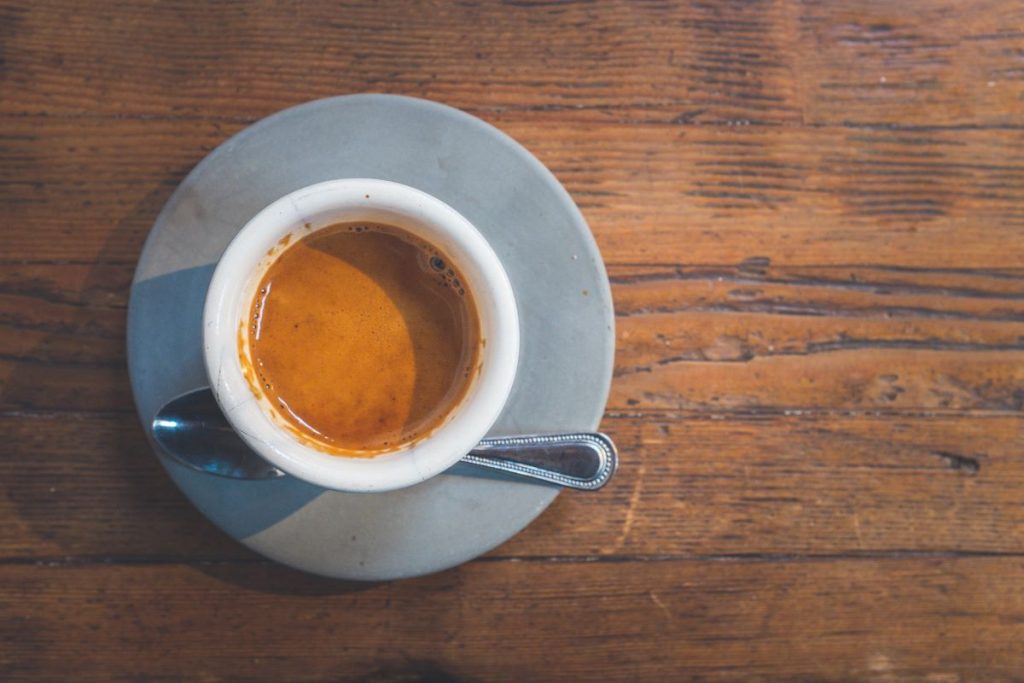
A ristretto is the stronger cousin of espresso. Photo credit: Pxhere
Americano
Sometimes you want a larger coffee in Italy. Maybe you want to sit and relax while reading a book or chatting with a friend. In that case, consider an Americano. This drink is a shot of espresso with approximately two or three times the ratio in hot water. Italians call it Americano because it resembles American filtered coffee.
No one knows for sure who coined the name. However, a popular story claims that American G.I.s stationed in Italy after World War II added hot water to espresso to make it less strong.
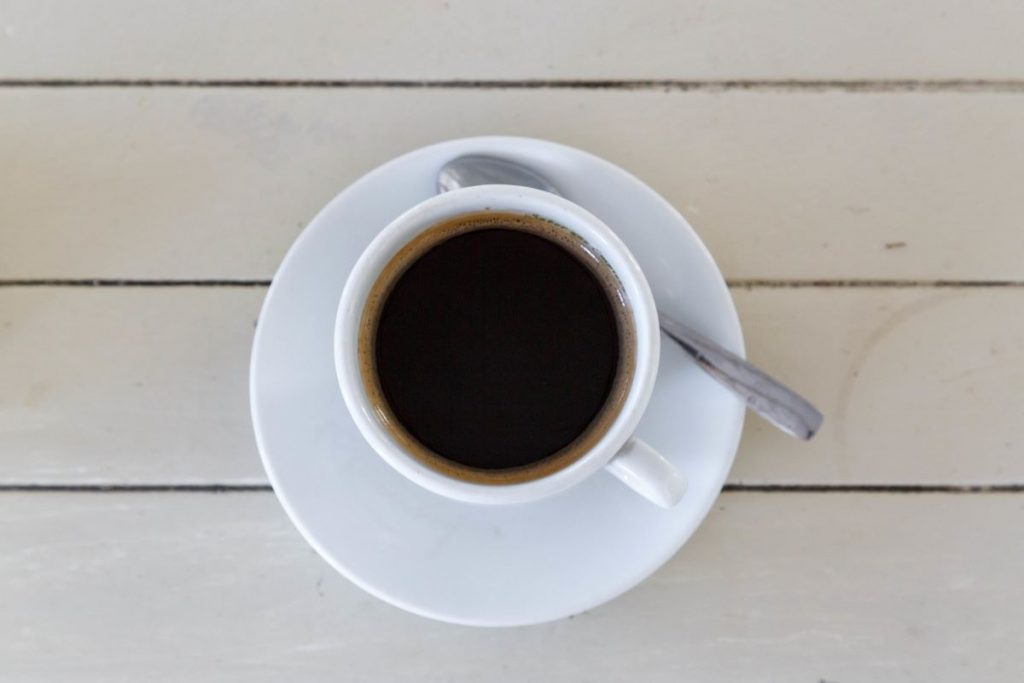
One of our favorite no-frills cups of coffee? An Americano. Photo credit: Marco Verch
Caffé corretto
When you’re feeling bold or need something to calm you down with your espresso, ask for a “caffé corretto.” The name means “corrected coffee.” This version of espresso includes a shot of booze—usually grappa, but sometimes sambuca.
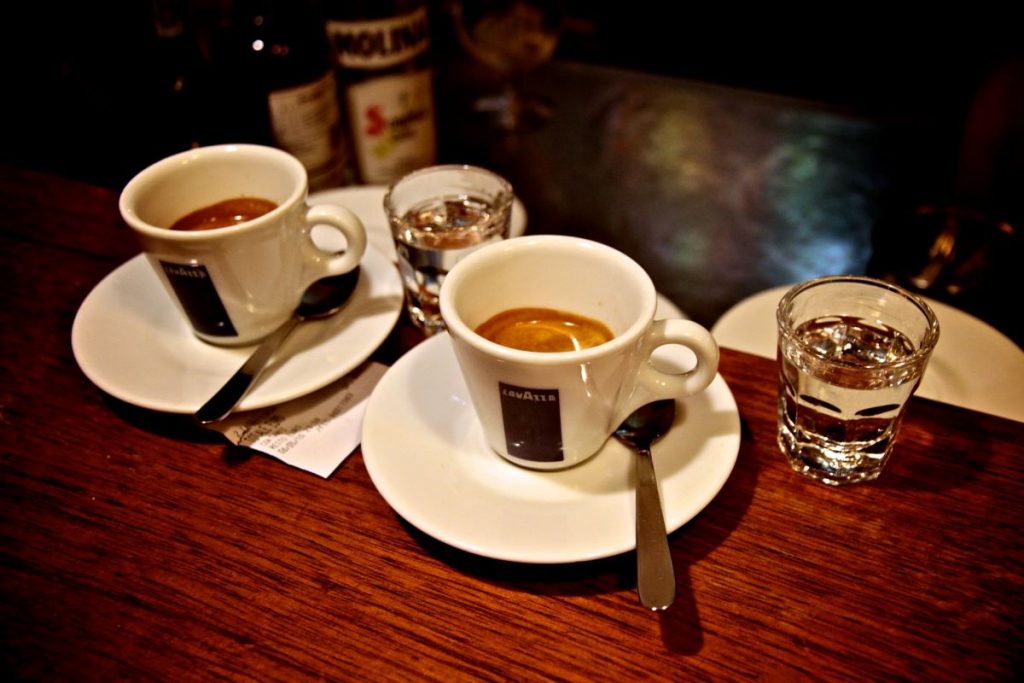
Caffè corretto is Italian espresso with a splash of liquor, like grappa, brandy, or sambuca. Photo credit: Takumi Yoshida
Whether you order a classic espresso or try lesser-known Italian coffee names, you’ll quickly discover that traditional Italian coffee drinks are all about quality, ritual, and community.
Quick Tips for Ordering Coffee in Italy:
- Learn the basic coffee names: espresso, cappuccino, macchiato, ristretto, Americano, and caffé corretto.
- Always pay at the cashier first; then, take your receipt to the barista.
- Stand at the bar for a true Italian experience and lower prices.
- Limit your milk-based coffee orders to the morning.
- Try a caffé corretto if you want something adventurous.
- Don’t expect large, to-go cups—coffee in Italy is about savoring the moment.
- Stir your espresso before drinking, even if you skip the sugar.
- Remember, ordering coffee “to go” is rare and sometimes frowned upon.
- If you want a longer drink, order an Americano, not a “coffee.”
- Enjoy the ritual and atmosphere. Italian coffee culture is about much more than the drink itself.
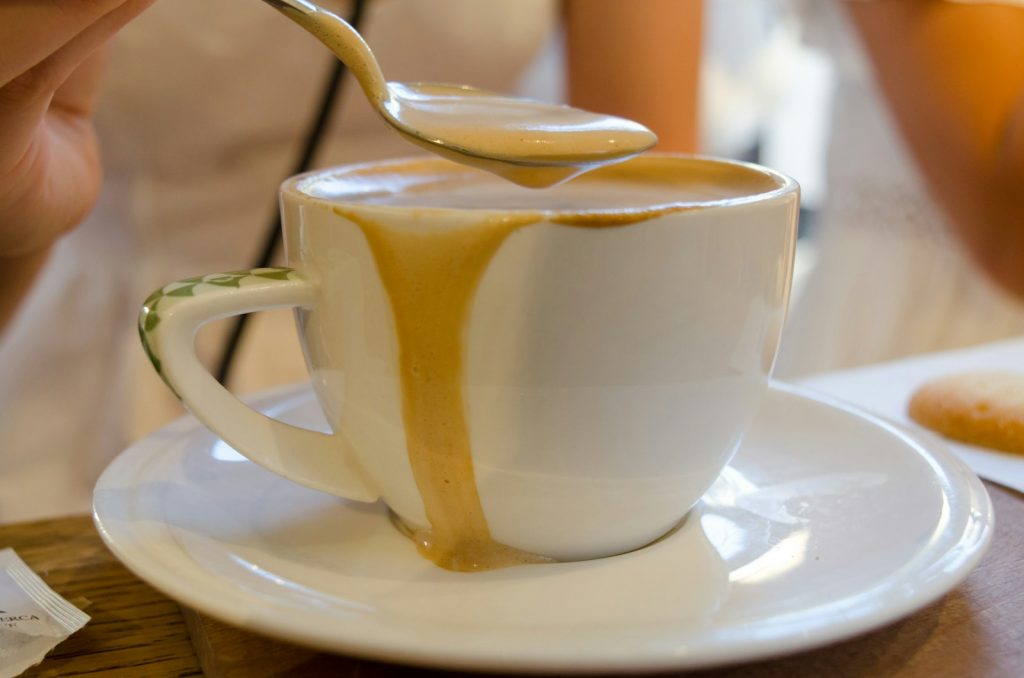
FAQ: Coffee in Italy
What are the most popular types of coffee in Italy?
The most popular coffee in Italy is espresso, which is the foundation for many other drinks. Other favorites include cappuccino, macchiato, ristretto, Americano, and caffé corretto. Each of these traditional Italian coffee drinks has its own character and occasion.
What are some common Italian coffee names I should know before ordering?
Some essential Italian coffee names are espresso, cappuccino, macchiato, ristretto, Americano, and caffé corretto. Familiarizing yourself with these types of coffee in Italy will help you order like a local and enjoy the best the bar has to offer.
Why can’t I order a cappuccino after 11 a.m. in Italy?
It’s a long-standing tradition in Italy to drink cappuccino only in the morning, usually before 11 a.m. This is partly due to the Italian belief that milk can interfere with digestion after a meal. If you order one later in the day, expect a few raised eyebrows!
How did coffee become so popular in Italy?
The history of coffee in Italy dates back to the 16th century when it arrived in Venice. Over time, coffee culture blossomed, especially with the invention of espresso in the early 20th century. The development of traditional Italian coffee drinks helped cement coffee as a vital part of daily life and social rituals.
What’s the difference between a ristretto and an espresso?
Both are made with the same amount of coffee grounds, but a ristretto uses less water, resulting in a more concentrated and intense flavor. If you love strong coffee, ristretto is the way to go.
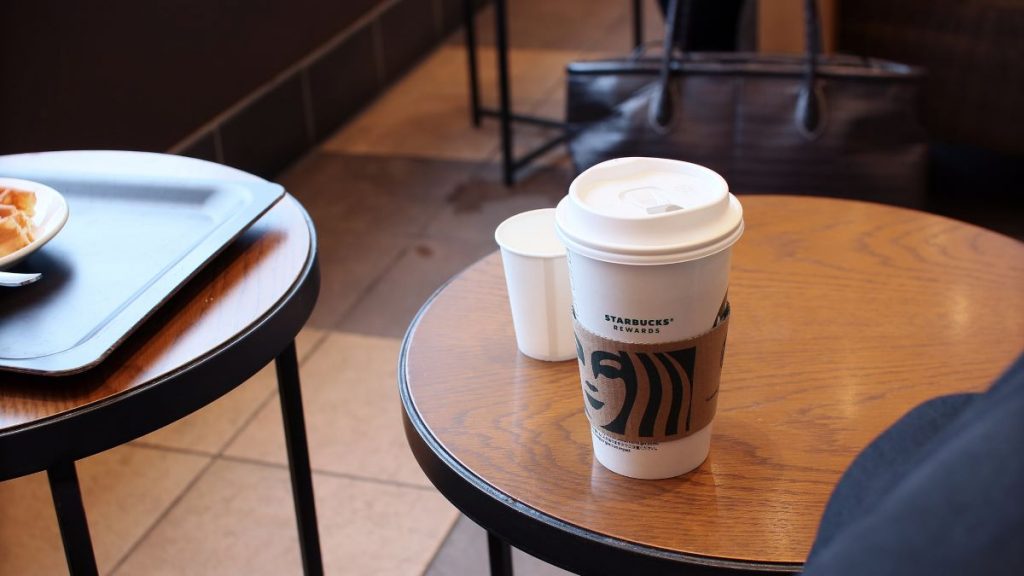
With so many great options for coffee in Italy, skip Starbucks. Photo credit: MIKI Yoshihito
Skip Starbucks when you’re in Italy. Go to a local coffee bar instead. You’ll appreciate it all the more now that you know a bit more about coffee in Italy.
